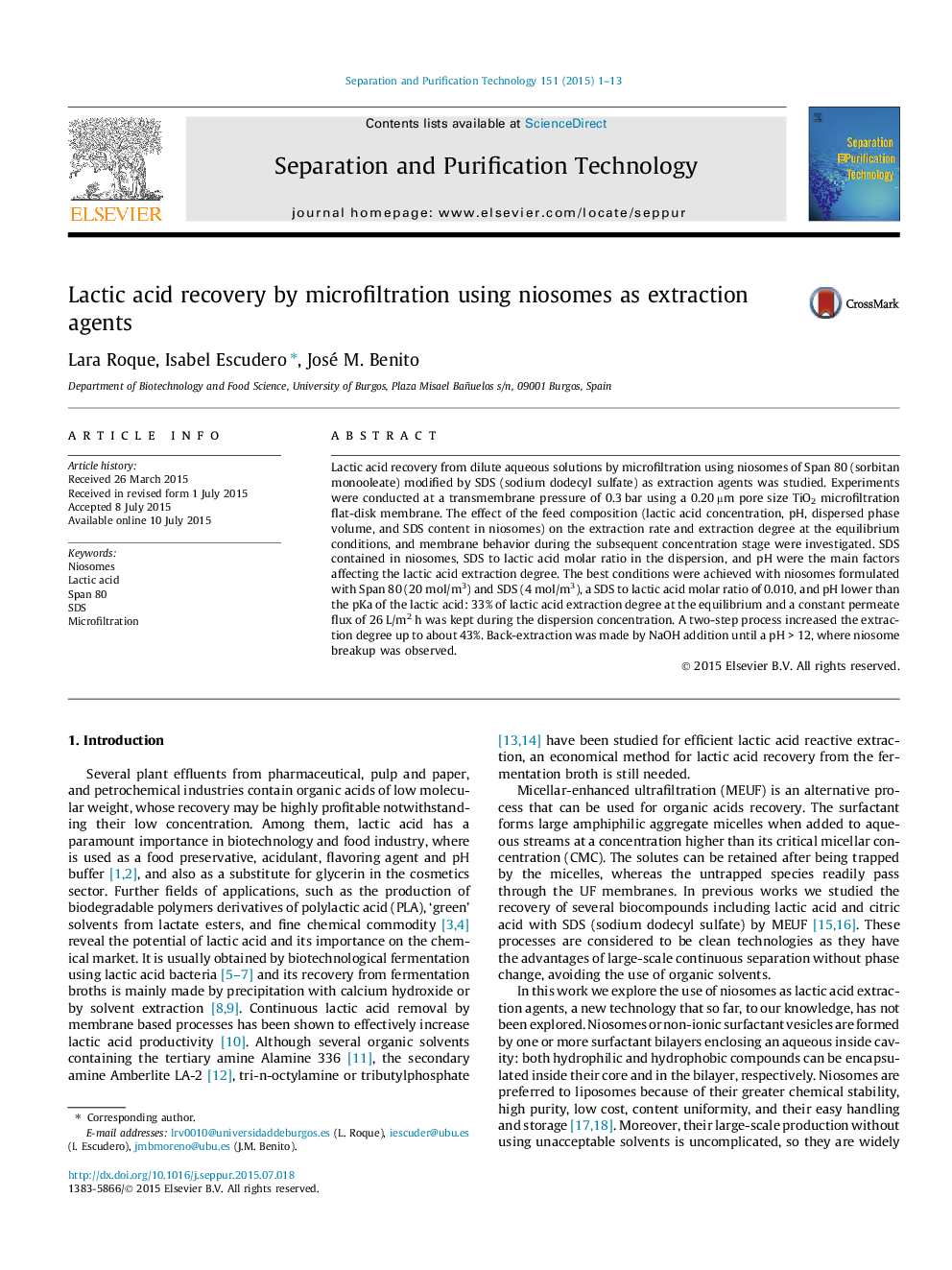| Article ID | Journal | Published Year | Pages | File Type |
|---|---|---|---|---|
| 640402 | Separation and Purification Technology | 2015 | 13 Pages |
•Lactic acid was recovered by ceramic membrane MF using niosomes as extraction agents.•Span 80 (20 mol/m3) + SDS (4 mol/m3) niosomes at pH = 2 and SDS/A = 0.01 gave best results.•Lactic acid protonated species form hydrogen bonds with SDS at the niosome surface.•33% lactic acid extraction degree was reached, being up to 43% for a two-step process.•Lactic acid back-extraction was performed by breakup of niosomes at pH > 12.
Lactic acid recovery from dilute aqueous solutions by microfiltration using niosomes of Span 80 (sorbitan monooleate) modified by SDS (sodium dodecyl sulfate) as extraction agents was studied. Experiments were conducted at a transmembrane pressure of 0.3 bar using a 0.20 µm pore size TiO2 microfiltration flat-disk membrane. The effect of the feed composition (lactic acid concentration, pH, dispersed phase volume, and SDS content in niosomes) on the extraction rate and extraction degree at the equilibrium conditions, and membrane behavior during the subsequent concentration stage were investigated. SDS contained in niosomes, SDS to lactic acid molar ratio in the dispersion, and pH were the main factors affecting the lactic acid extraction degree. The best conditions were achieved with niosomes formulated with Span 80 (20 mol/m3) and SDS (4 mol/m3), a SDS to lactic acid molar ratio of 0.010, and pH lower than the pKa of the lactic acid: 33% of lactic acid extraction degree at the equilibrium and a constant permeate flux of 26 L/m2 h was kept during the dispersion concentration. A two-step process increased the extraction degree up to about 43%. Back-extraction was made by NaOH addition until a pH > 12, where niosome breakup was observed.
